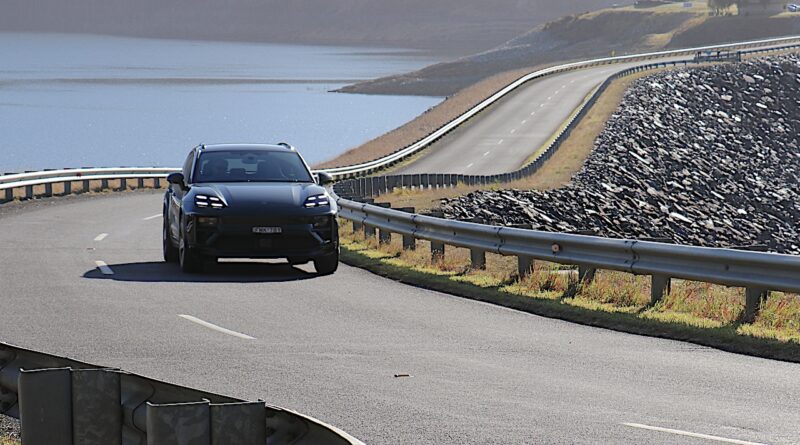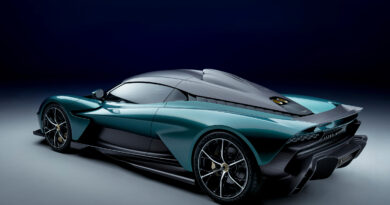2025 Porsche Macan Turbo Review: A drive into the country to decide if an electric Porsche still drives like a Porsche
The battery electric Porsche Macan luxury SUV is the most controversial Porsche since the last time Porsche chose to do something other than a rear-engined sports car.
So, needless to say, there have been a few controversial Porsches over recent decades as it expanded into mid-engine sports cars (Boxster and later Cayman), diesels, SUVs (Cayenne and later Macan) and then EVs (Taycan and now Macan) by the way of various hybrids, including, most recently, the iconic 911.
So what we’re about here is taking the electric Macan for a drive into the country where mountains are high, roads are winding and Porsches have traditionally prospered.
Does the Macan, sans petrol engine and driver-manipulated gearbox, still retain that almost indefinable Porsche character? That capability to deliver those immersive moments where time fades and there’s only the drive?
2025 Porsche Macan Turbo price and equipment
To try and answer this question we’re driving the flagship Macan Turbo, priced at a gut-punching $187,600 (plus on-road costs). And in our case, plus options that drive the price well over $200,000.
We’ve pondered that pricing and much more in various articles about the electric Macan since it first broke cover.
Here’s a selection of our previous scribblings from overseas first drives to week-long local road tests:
READ MORE: Porsche Macan EV freshens up! But is more tech enough as German brand braces for arrival of advanced BMW iX3 and Mercedes GLC?
READ MORE: 2024 Porsche Macan 4 review: Has Porsche over-reached dumping ICE and adding $30K to the price of its most popular premium SUV?
READ MORE: Electric Porsche Macan family expands with lower-priced 2WD model, increased EV range
READ MORE: 2024 Porsche Macan review: First drive of one of the most important new electric cars of the year
Clearly, there’s been plenty said, so let’s quickly scroll through the basics – technical and otherwise – to refresh what we’re talking about here.

The second generation Macan is based on the Premium Platform Electric (PPE) architecture co-developed by Porsche and fellow Volkswagen Group premium brand Audi, which uses it for the A6 e-tron and Q6.
The Turbo – no it does not have a turbocharger (another reason people criticise it) – generates up to 470kW/1130Nm on overboost courtesy of its dual e-motor all-wheel drive powertrain and 100kWh battery pack.
Top speed is 260km/h … allegedly … and acceleration stunning for a 2405kg (unladen) SUV: 3.3 seconds 0-100km/h, 7.4 seconds 0-160km/h and 11.7 seconds 0-200km/h.
Unsurprisingly, the claimed consumption rate is up to 20.7kWh per 100km and claimed range is 591km (both WLTP).
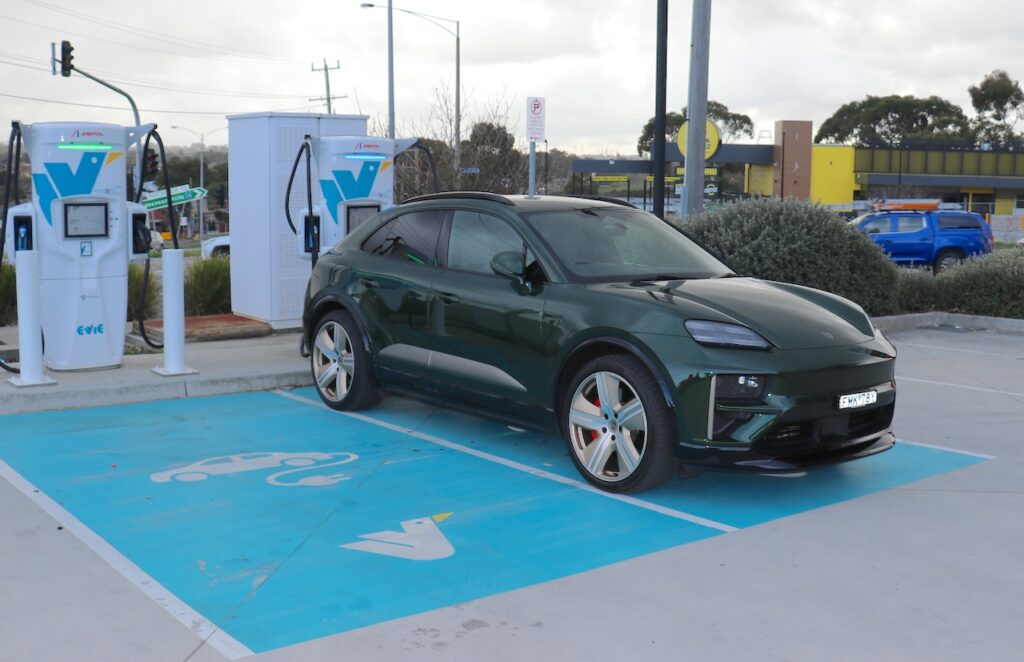
The claimed DC fast charging is pretty impressive at up to 270kW courtesy of the 800V electrical system (150kW at a 400V charging outlet). AC charging tops out at 11kW.
Our best DC fast charging result was 154kW on an Evie Tritium 350kW charger starting off at 30 per cent of battery capacity.
There’s a lot more tech underneath the Macan’s body, but we’ll get into that when the driving starts.
Exterior equipment highlights include two part Matrix LED headlights, familiar four-point driving lights, frameless doors, a panoramic sunroof, an automatically extending rear spoiler, a power tailgate and massive alloy wheels – optional 22s in our case. Unsurprisingly, there is no spare tyre.
The Macan Turbo’s interior highlights include 18-way powered front seats with heating, quad zone climate control, no less than three digital screens across the dashboard, a head up display, wireless Apple and Android smartphone connection and a 14-speaker Bose audio system.
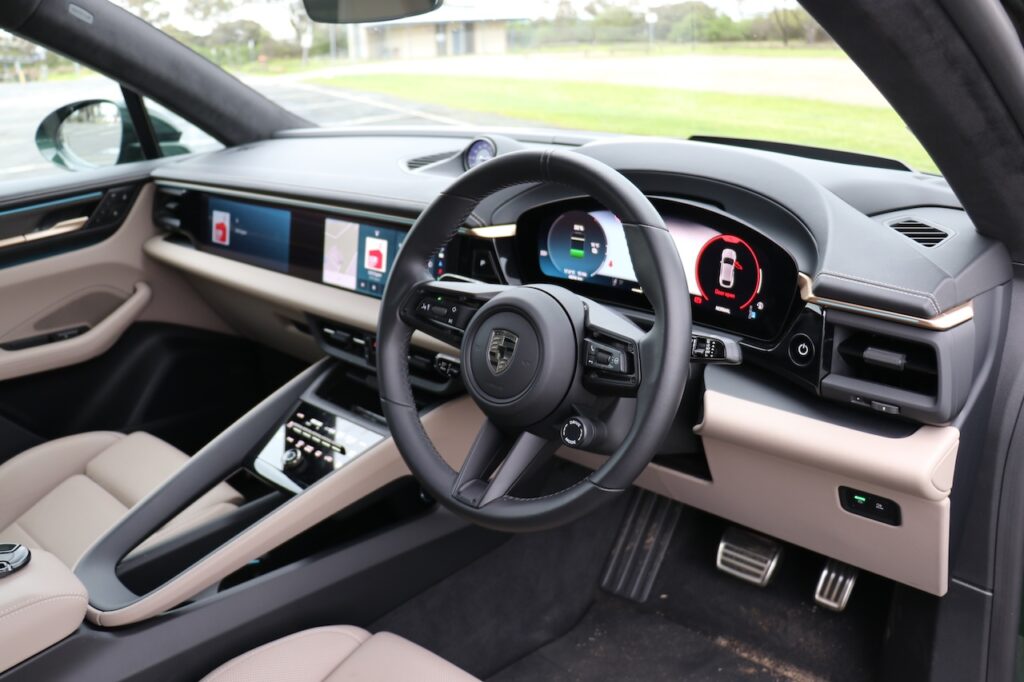
The boot measures up at 480 litres and is complemented by an 84-litre frunk.
Safety assistants include autonomous emergency braking, lane keeping assist but no lane centring (so it ping-pongs a bit), traffic sign recognition and a surround view camera.
Adaptive cruise control has a rare under-passing block. That means if you’re cruising on the freeway and someone’s dawdling in the right lane the Macan won’t pass on the left unless you over-ride the cruise. It’s a bit of a surprise the first time it happens and it keeps popping up as because – as you know – there is no lane discipline in Australia.
The Macan Turbo is covered by a substandard three-year vehicle warranty but a more acceptable eight-year/160,000km battery warranty.
2025 Porsche Macan Turbo: What we think
The Macan Turbo is a fuss-free drive around town just like most EVs are. It’s odd to be in a Porsche with only a single speed gearbox and therefore without a gearshift, just a small tab on the dashboard to select drive or reverse.
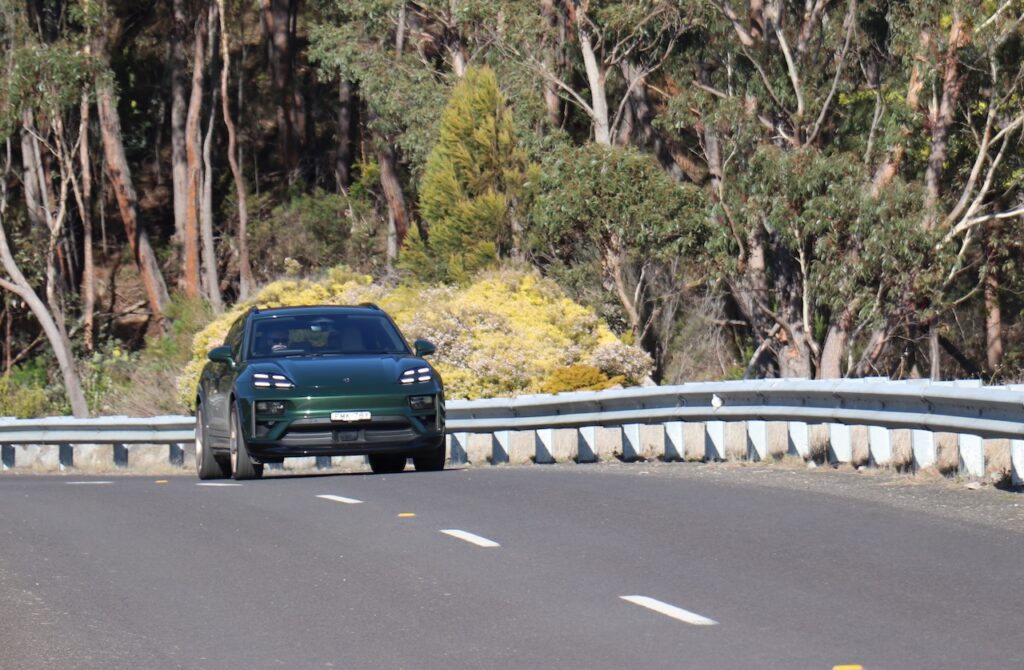
Controls and digital instrumentation are more complicated to operate, so much adjustability via buttons, rollers and stalks. It’s annoying to have to turn off lane keep each time the car is started – at least it’s accessed via a short cut, just wish the actual monitoring was more subtle.
This is a very comfortable ride considering the size of the wheels and thin strips of rubber it’s rolling on.
There’s only a reasonable amount of space in the rear seat, which is really set up for two people rather than three.
Consumption when cruising in town and into the country? Our real world experience came in at 19.9kWh, so not too far off the claim.
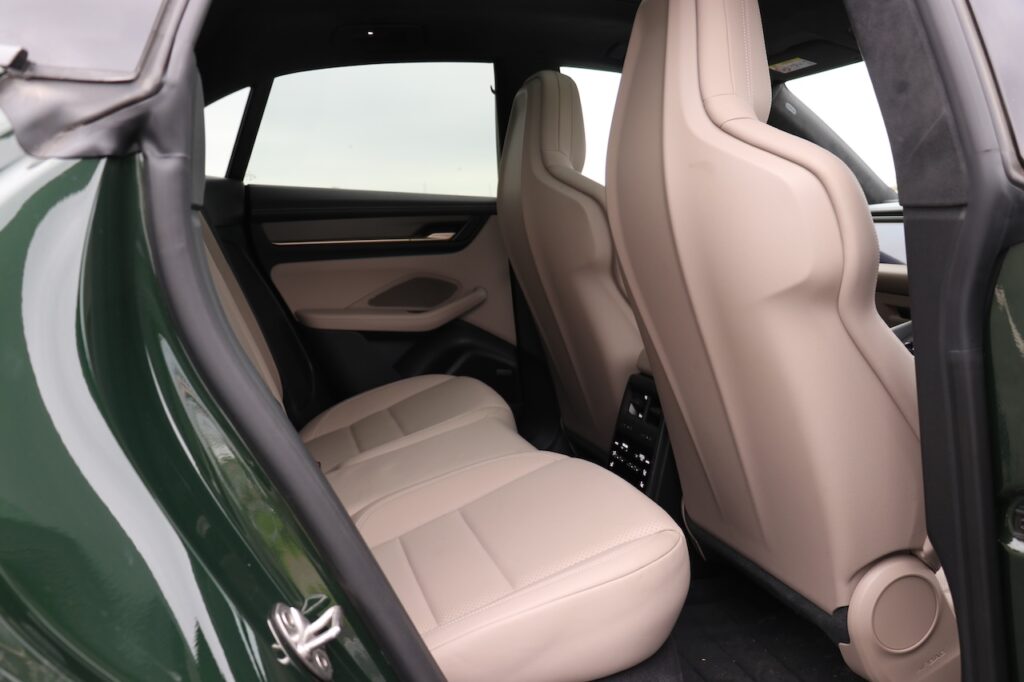
Funnily enough there’s no eco drive-mode – an EV staple – and no substantial one-pedal drive that signals strong regeneration.
OK enough of that everyday stuff, let’s delve into the Macan Turbo’s driving character. Our chosen route was some lovely, tangled blacktop in the Great Dividing Range north-east of Melbourne.
Turn into just about the first corner and the road is blocked by a stationary car and a recently-crashed motorbike. Hit the brakes and the Macan skates straight forward on an icy, wet, gripless surface. It’s obvious why the bike went down.
Happily, control is regained safely and only the biker’s pride is injured. So on we go, maybe a little more cautiously.
To be frank, this thing is about as far from the light, simple 911s of yore as can be imagined.
The Macan has an array of technology working on its behalf to deliver a rapid and secure driving experience.
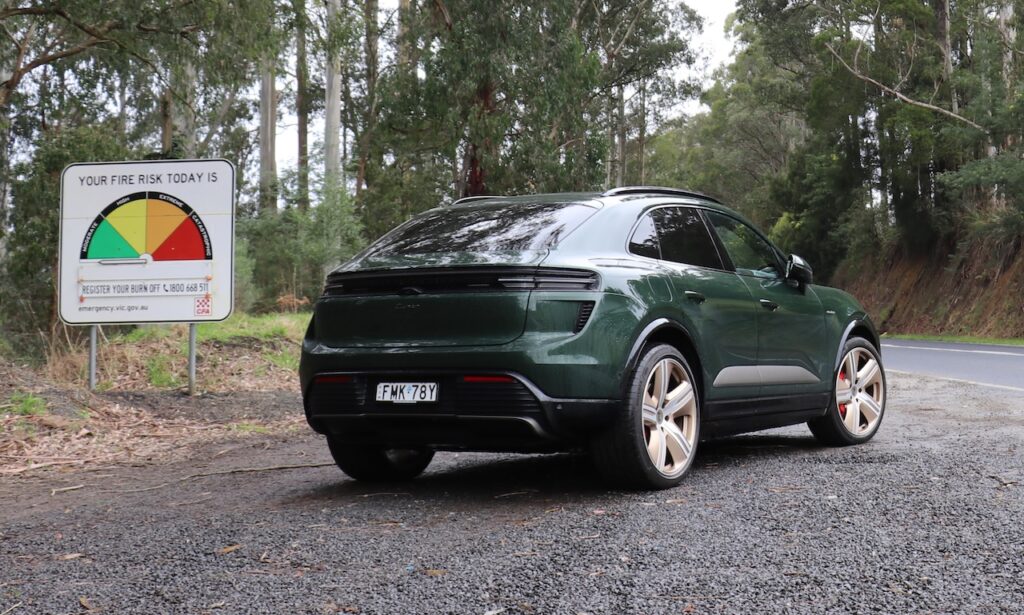
Underpinning everything is aluminium multi-link suspension that is overlaid in the Turbo by adaptive air suspension, PASM adaptive damping, traction control, an electronically controlled rear-axle differential lock called Porsche Torque Vectoring Plus and electric-assist power steering.
Our test car added rear axle steering, which tightens the turning circle at low speed and increases stability at higher speed.
Even the front sports seats have a ridiculous amount of adjustment including adjustable side bolsters.
All this stuff is designed to provide security and stability when the Macan Turbo’s capabilities are tapped. It has a lot of them.
The party trick is the ridiculous head banging acceleration – as in banging your head backward into the headrest as the traction control light flickers on the dash. You’re so quickly into illegal territory it’s stunning.
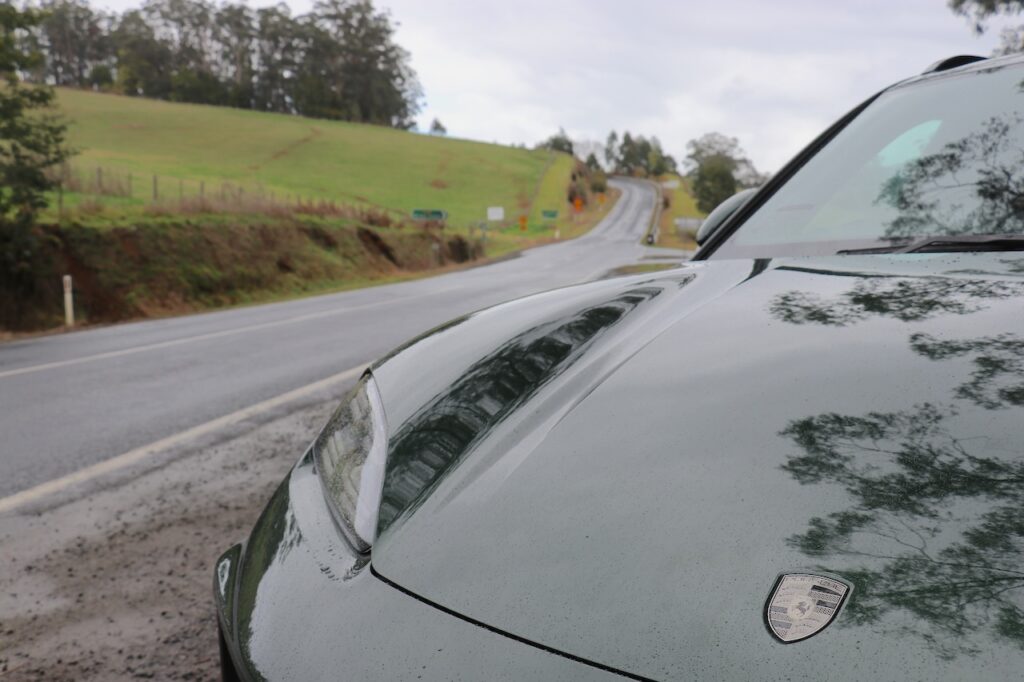
The manoeuvres you can attempt in traffic are increased exponentially because of this instant, extreme response. The time spent travelling between corners on a winding road is decreased just as dramatically.
There’s no engine noise just some tyre noise and e-motor whirring, unless you turn on the artificial sound that imitates a spaceship.
The problem with this silence is one of the traditional ways in which we judge speed is therefore gone. It is easy to arrive at a corner quicker than intended.
Then all that digital wizardry comes into play, whisking the car around the corner whether you think it’s gonna make it or not.
But it is a remote somewhat sanitised experience. It feels big and heavy and even that legendary Porsche steering feels curtained off.

The Macan Turbo is going very fast, but that’s not the real point. The real point is involvement. You can’t even adjust regen braking levels on the steering wheel via flappy paddles, like any Hyundai Ioniq EV offers.
A fake gearbox? Porsche execs blanch at the prospect.
But then a breakthrough. On Sunday morning, on a quiet country backroad, damp under the trees and rippled in the corners, downhill and uphill, the adaptive dampers are set to their tightest, most aggressive Sport+ tune.
Suddenly, there are jolts rather than a magic carpet, there is body deflection rather than unnaturally flat cornering. It’s less relaxing and more focussed. Less perfect, sharper.
Perhaps counter-intuitively, this imperfection results in the most memorable drive of the entire weekend. It’s not immersive, but it is the most three-dimensional.
It’s also a very fast progress. Maybe faster than I could manage in a 911, but certainly not as all-consumingly, addictively, engrossingly enjoyable.
Back on the logical side of the brain, where does all this leave us in terms of consumption? The Macan Turbo came out at about 400km between recharges when open road touring, well shy of its claim. And that’s probably the primary drawback for an interstate blast. You’ll spend much more time charging than an ICE Cayenne will refuelling.
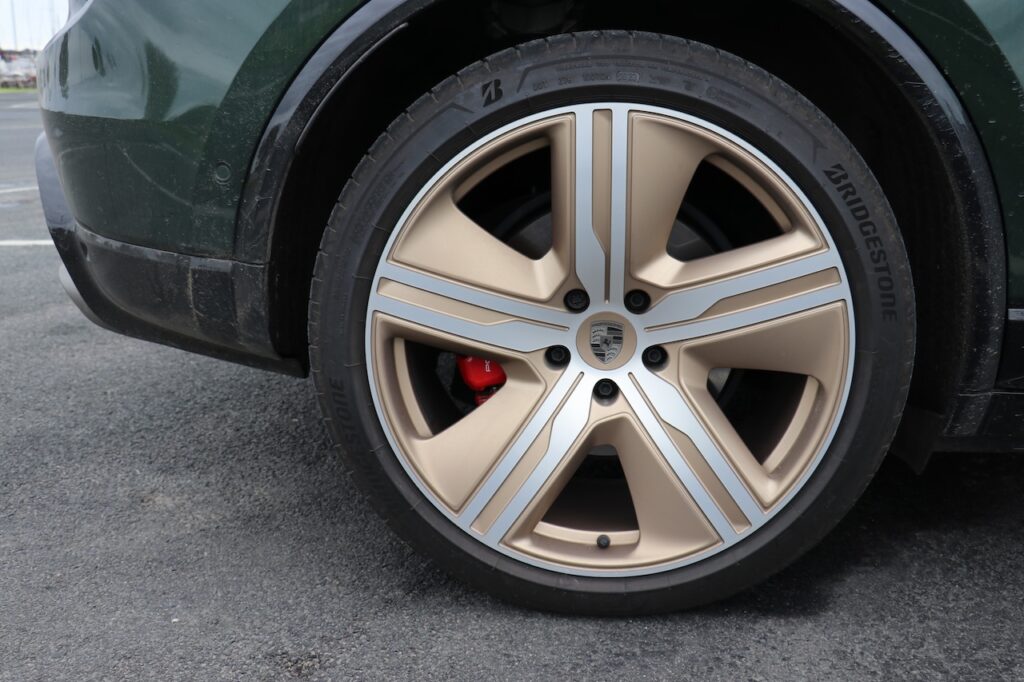
Our consumption average at the end of our 500km exploratory weekend came out at 22.3kWh/100km. Pretty darn good for such a heavy, powerful projectile.
2025 Porsche Macan Turbo: Verdict
The Porsche Macan Turbo is a mighty impressive, mighty expensive technical exercise.
In terms of sheer exacting execution, it just might be the best electric vehicle on the road in Australia today.
But it’s not a great Porsche, not in the sense that old fogeys like me appreciate. We expect a colourful, demanding, textured Porsche.
And it’s fair to suggest, given Porsche’s recent change of EV strategy, there are a few old fogeys about.
The next step on this electric road are the Boxster and Cayman EVs. And Porsche is talking a big game for them.
Hopefully they take the next step beyond admirable excellence to proper driving connection.
SCORE: 3.5/5
2025 Porsche Macan Turbo specifications
Price: $187,600 (plus on-road costs)
Basics: EV, 5 seats, 5 doors, SUV, AWD
Range: 591km (WLTP)
Battery capacity: 100kWh lithium-ion
Battery warranty: 8 years/160,000km
Energy consumption: 20.7kWh/100km (WLTP)
Motors: 1 front, 1 rear, 470kW/1130Nm.
AC charging: 11kW, Type 2 plug

